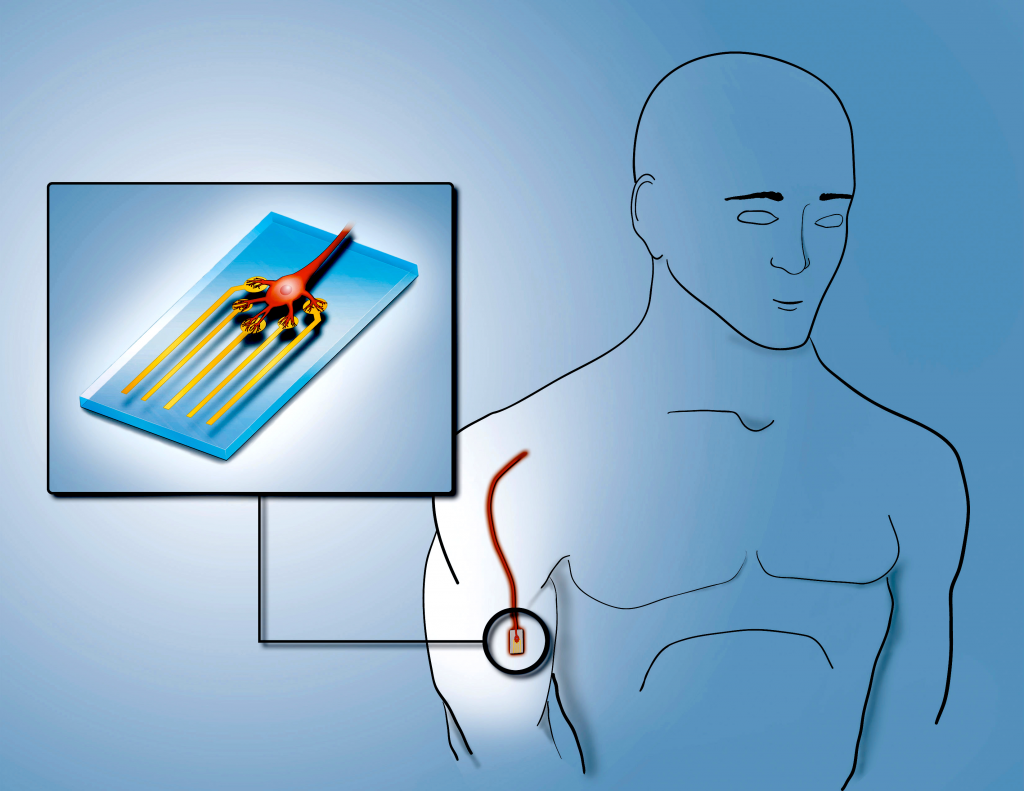The Bettinger Group works at the interface of materials chemistry and electronically active soft matter to invent new polymeric biomaterials to advance the next-generation of medical devices. We achieve these goals by leveraging many disciplines including polymer synthesis, microfabrication techniques, electrochemistry, and interfacial science. Novel polymeric biomaterials have applications including, but not limited to, controlled release, brain-machine interfaces, and ingestible electronic devices. The portfolio of active projects can be loosely categorized into the following thrusts:

|
(1) Reconfigurable Soft Matter Networks
Stimuli-responsive materials serve as the cornerstone of smart materials for medical implants. We are using principles of polymer chemistry, macromolecular engineering, and materials science to design, synthesize, and characterize dynamic reconfigurable soft matter networks. These soft matter networks are designed to respond to a range of stimuli including near-IR light, heat, and other forms of energy that can transit tissue in a facile manner. These materials have potential applications in controlled release and dynamic medical materials. |
 |
(2) Materials and Structures for Ingestible Electronics
Modern implantable electronic devices have greatly improved the quality of life for many patients. Cochlear implants, continuous glucose monitoring systems, and deep brain stimulation devices are prominent examples. Virtually all implantable devices are susceptible to a predictable cascade of tissue-materials reactions that can negatively impact device performance and may contribute to device failure in vivo. Ingestible electronic devices offer a novel strategy to obviate many challenges associated with permanent implants. We design, synthesize, and fabricate novel biomaterials to advance ingestible electronics including biologically derived energy storage materials and ultracompliant electronic components. |
 |
(3) Polymers for Brain-Machine Interfaces
The physical properties of electronic materials used in medical devices that sense and perturb physiological functions are fundamentally incompatible with many types of excitable tissue. Synthetic devices are often composed of rigid materials (E ~ 10 GPa) that evoke a potent wound healing response and transmit information in the form of electrons. Natural tissues are highly compliant (E ~ 1 kPa) and communicate using ionic currents. Synthetic polymers can serve as materials that bridge abiotic-biotic interface for applications ranging from brain-machine interfaces to pacemakers. |





